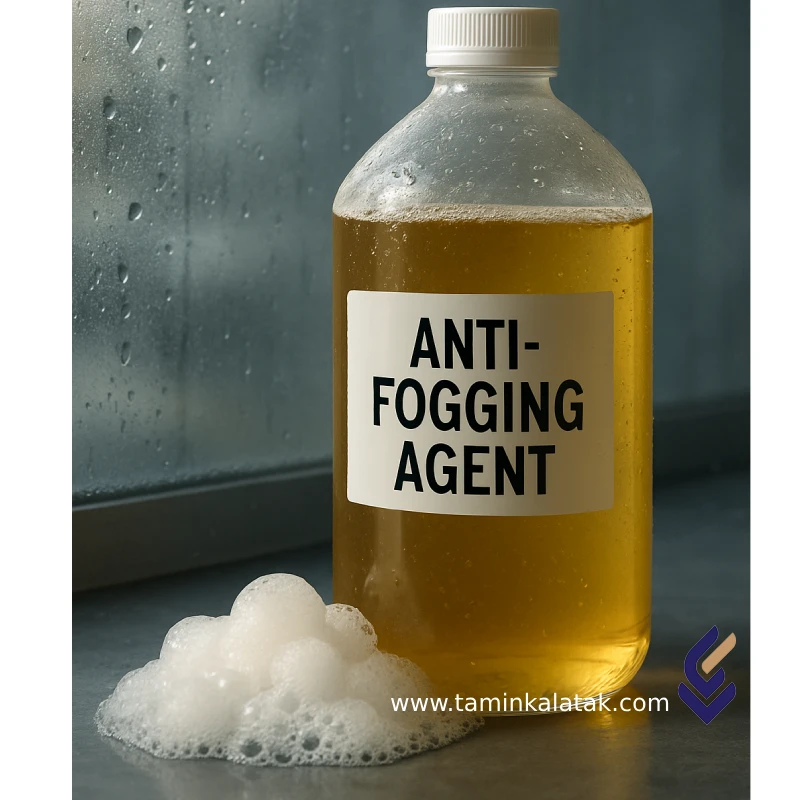Polymers are made up of very large molecules made up of many repeating units called monomers, which ultimately form this long polymer chain
AntiFog Agents
Anti-Fog Agents are compounds used to prevent the formation of fog or condensation on transparent surfaces such as plastics, glass, and packaging films. These additives play a crucial role in maintaining visual clarity and preventing visibility reduction, especially in food packaging, eyewear, and plastic sheets.
Chemical Structure of Anti-Fog Agents
The chemical composition of anti-fog agents typically includes hydrophilic compounds such as polyethylene glycols, fatty acid esters, or amphoteric compounds.
These structures are designed to absorb surface moisture and prevent the formation of fine water droplets by transforming them into a uniform water layer, thereby preserving the transparency of the surface.
Key Properties of Anti-Fog Agents
-
High moisture absorption: Absorbs vapor and distributes it evenly across the surface.
-
Thermal stability: Resistant to high temperatures during thermal processes such as extrusion.
-
Odorless and tasteless: Suitable for use in food packaging applications.
-
Compatibility with various polymers: Can be blended with polyethylene (PE), polypropylene (PP), and polyethylene terephthalate (PET).
Applications of Anti-Fog Agents
| Application Area | Description |
|---|---|
| Food Packaging | Used in packaging films to prevent fog formation inside refrigerators. |
| Medical Products | Applied to protective equipment such as masks and goggles. |
| Greenhouse Panels | Enhances transparency and improves light transmission for better plant growth. |
| Lenses and Eyeglasses | Reduces fogging caused by breathing or temperature changes. |
Disadvantages of Anti-Fog Agents
-
Limited durability: Some formulations are only effective for a limited time.
-
Possible alteration of polymer properties: May slightly affect the optical or mechanical characteristics of the base material.
-
Higher cost: Typically more expensive than standard additives.
Advantages of Anti-Fog Agents
-
Improved visual quality of packaging materials.
-
Extended product shelf life by maintaining a clean, appealing appearance.
-
Environmentally friendly options available with biodegradable formulations.
-
Versatility for use across diverse and sensitive industries.
Antifog agents
| Product | Grid | Melt Flow Index (MFI) (g/10 min) | Density (g/cm³) | Process method | Applications |
|---|---|---|---|---|---|
| Anti-fog polyethylene masterbatch | AF-PE 100 | 5 – 10 | 0.92 – 0.94 | Blown film, extrusion | Food packaging films, greenhouse films, screen protectors |
| PP Anti-fog Masterbatch | AF-PP 120 | 8 – 12 | 0.90 – 0.91 | Extrusion, film making | Fruit and vegetable packaging, transparent disposable containers |
| Anti-fog additive for PET | AF-PET 200 | 12 – 18 | 1.32 | Co-extrusion, lamination | Cold storage packaging, clear bottles |
| Anti-fog coating liquid | AF-LIQ 300 | — | 1 | Surface coating, spray | Protective glasses, car windows, medical and anti-fog screens |







